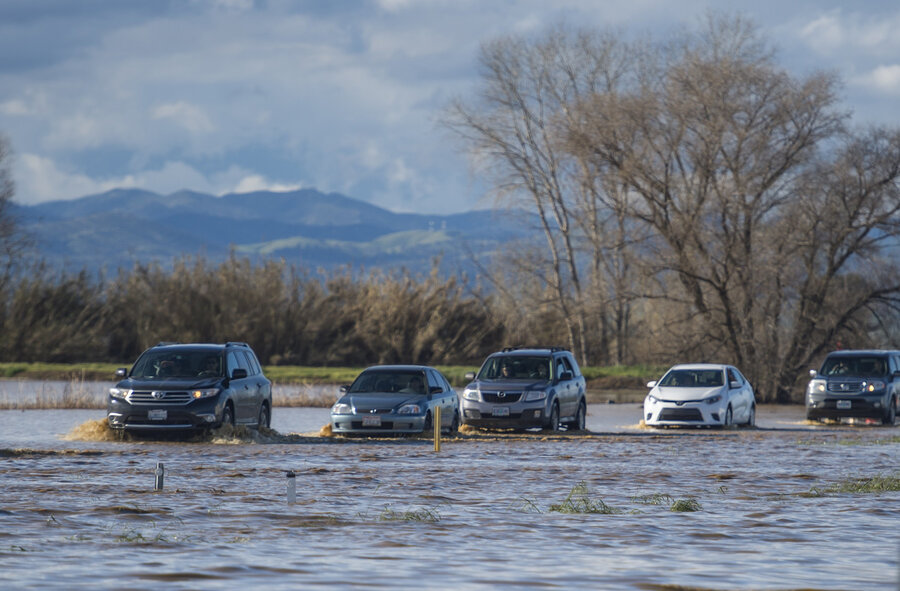Southern California rain eases; north facing renewed storm
Loading...
| LOS ANGELES
A huge Pacific storm that parked itself over Southern California and unloaded, ravaging roads, opening sinkholes and leading to the deaths of at least three people, eased off Saturday. But it was only a temporary reprieve as new storms took aim farther north.
The National Weather Service predicted drying weather through Sunday followed by the return of wet weather in the region. But while flash-flood watches for Southern California were canceled, Northern California and the San Francisco Bay Area were facing a weekend return of heavy rain and winds that lashed them earlier in the week before the storm moves out. Authorities said the San Joaquin River is reaching flood stage, and they are warning residents in Manteca to be ready to evacuate in case it reaches dangerous levels.
"Stronger southerly winds and widespread flooding will be likely as an atmospheric river (of moisture) takes aim somewhere along the central California Coast," a weather statement warned.
The approaching rain could cause more problems in the far north, where damage to spillways of the Lake Oroville dam forced the evacuation of 188,000 people last weekend.
The California Department of Water Resources, however, said Saturday night that the level of Lake Oroville continues to fall despite the stormy weather, and the amount of water flowing down the spillway continues to be cut. The amount of water flowing down the spillway has been reduced to 55,000 cubic feet per second, the department said. Earlier this week, outflows were at nearly 100,000 cubic feet per second.
Meanwhile, authorities up and down the state were dealing with the fallout, including overflowing creeks, mudslide threats in foothill areas denuded by previous fires, road collapses and hundreds of toppled trees in neighborhoods.
Northwest of Sacramento, nearly 200 people were evacuated Saturday as overflowing creeks turned the town of Maxwell into a brown pond, with some homes getting 2 feet of water. Fire Chief Kenny Cohen said nearly 100 homes and the elementary school filled with a couple inches of water before the water began receding. The area received about 3 inches of rain as of Saturday morning.
No injuries were reported.
Cheri Azevedo said her garage had 2 feet of water, but her home had been spared Saturday. Others on her block and nearby were not as lucky, as all of them were evacuated.
"It is heartbreaking," she told the San Francisco Chronicle.
Southern California appeared to dodge any major disasters, but in the desert town of Victorville, several cars were washed down a flooded street, and one man was found dead in a submerged vehicle after others were rescued, San Bernardino County fire spokesman Eric Sherwin said.
And in the Sherman Oaks area of Los Angeles, a man was electrocuted when a tree falling in heavy rain downed power lines that hit his car.
On Saturday, searchers found the body of a man in his 20s who was swept down a rain-swollen gully in Thousand Oaks a day earlier. KCBS-TV reported that the body was found in Arroyo Conejo Creek. Three other people stranded by the water were rescued.
In the Studio City area of Los Angeles, a sinkhole swallowed two cars, the second on live TV as viewers watched it teeter on the edge before plunging in. One driver was taken to the hospital in fair condition.
Inland at the Cajon Pass, the shoulder of Interstate 15 crumbled and sent a parked firetruck spilling over the side, but no one was hurt. The California Department of Transportation estimated emergency repairs to the freeway would cost $3 million.
___
AP writers John Antczak and Mike Balsamo contributed to this report.





